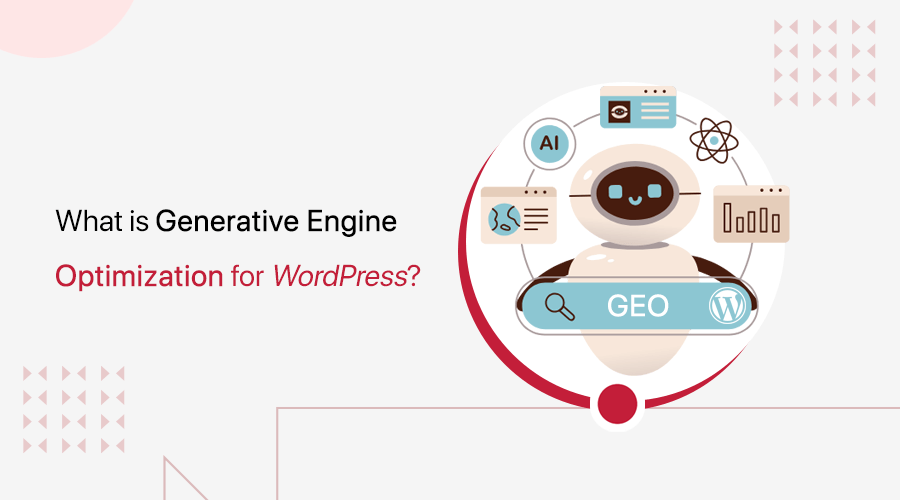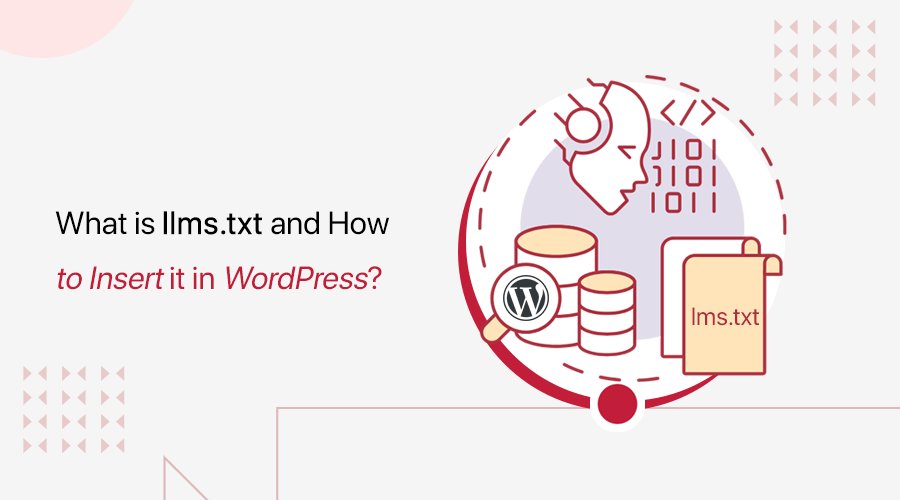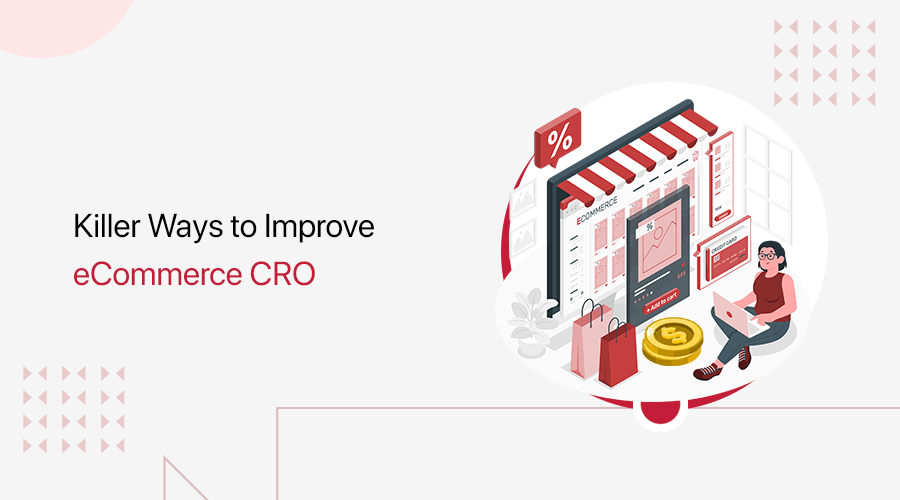
Do you want to unlock the full potential of your online store with the power of eCommerce Conversion Rate Optimization (CRO)? If yes, then here we go!
In the cutthroat world of eCommerce, every click, every page view, and every abandoned cart represents a missed opportunity.
So, how do you convert casual browsers into loyal customers? How do you ensure that your visitors don’t just leave without making a purchase or your desired action?
Well, with the right CRO strategies, you can turn those missed opportunities into conversions. That drives revenue and skyrockets your business to new heights.
Hence, we’ve compiled the most effective tactics that have been tried, tested, and proven to deliver results. So, you can transform your online store into a conversion powerhouse.
Now, let’s dig in!
Understanding the Basics of eCommerce CRO (Conversion Rate Optimization)
eCommerce Conversion Rate Optimization (CRO) is the systematic process of increasing the percentage of website visitors who take a desired action. Be it completing a purchase, signing up for a newsletter, or engaging with your content.
It’s about understanding what drives, stops, and persuades your users so you can provide the best user experience possible.
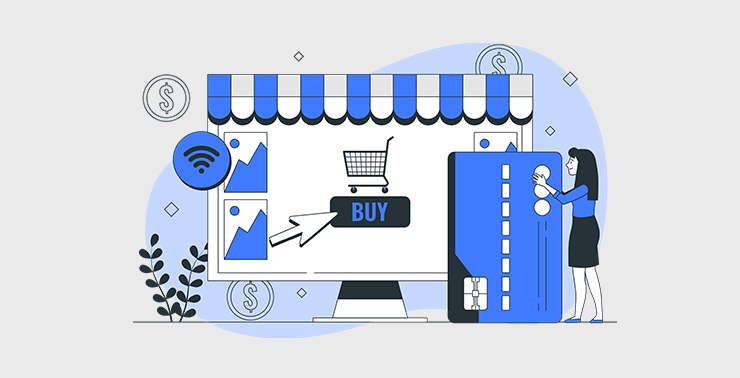
So, how does eCommerce CRO actually work? Well, it follows a structured approach that involves:
- Defining Goals: Identify the desired actions you want visitors to take. Whether it’s making a purchase, signing up for an email list, or engaging with a particular product.
- Understanding Users: Analyze user behavior through data analytics, heatmaps, and user testing to uncover their motivations, pain points, and decision-making processes.
- Hypothesis Development: Formulate hypotheses about potential improvements. That could enhance the user experience and increase conversions.
- Testing and Experimentation: Implement A/B testing, multivariate testing, and other experimentation methodologies to evaluate the effectiveness of your hypotheses.
- Data Analysis and Adaptation: Continuously analyze test results, draw insights, and refine your strategies based on data-driven evidence.
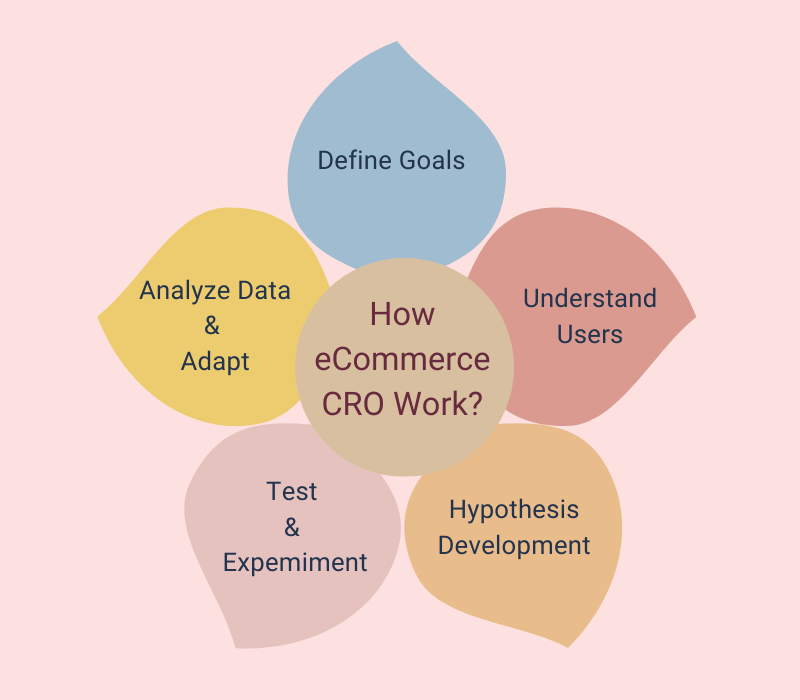
Indeed, eCommerce CRO is an ongoing process of learning and optimization.
It’s about creating the best possible shopping experience for your customers while also maximizing your revenue. By focusing on the basics of CRO, you can start making improvements that will have a real impact on your business.
Why Is It Important for Online Businesses?
In the competitive world of online retail, CRO is crucial because it directly affects your online business’s bottom line.
By optimizing your website for conversions, you’re not just attracting more traffic. Rather, you’re converting more of that traffic into paying customers. It’s about making the most of the traffic you already have.
Effective CRO leads to:
- Higher conversion rates: More visitors become paying customers.
- Better customer insights: Understanding customer behavior helps tailor experiences.
- Improved Return on Investment (ROI): Higher conversions mean better returns on your marketing spend.
- Enhanced user experience: A smooth shopping experience increases customer satisfaction and loyalty.
- Competitive advantage: Stand out in a crowded market by offering a superior online experience.
Having said that, let’s see how we can measure it in the next section.
How to Measure eCommerce Conversion Rate?
The conversion rate is a key metric in eCommerce CRO.
To calculate it, divide the total number of conversions by the number of visitors and then multiply the result by 100 to get a percentage.
For instance, if your site receives 1,000 visitors and 50 of them make a purchase, your conversion rate is 5%.

With that, you’ve now grasped the basics of eCommerce CRO, recognizing its importance, and measuring your conversion rate effectively.
Are you new to the world of eCommerce? Check our article on what is eCommerce and how to build an eCommerce website.
eCommerce CRO: 21 Killer Ways to Improve Your Conversions
Now, get ready to dive deep into the art and science of conversion rate optimization.
So, here we present you the 21 killer ways to improve your conversions.
1. Track How People Interact With Your Site
Before embarking on your CRO journey, it’s essential to understand how people interact with your website.
Think of your website as a map, and tracking visitor behavior is like decoding its hidden clues to uncover conversion opportunities.
So, here’s how you can do it:
i) Utilize Heatmaps:
Heatmaps show where users click, move, and scroll on your site.
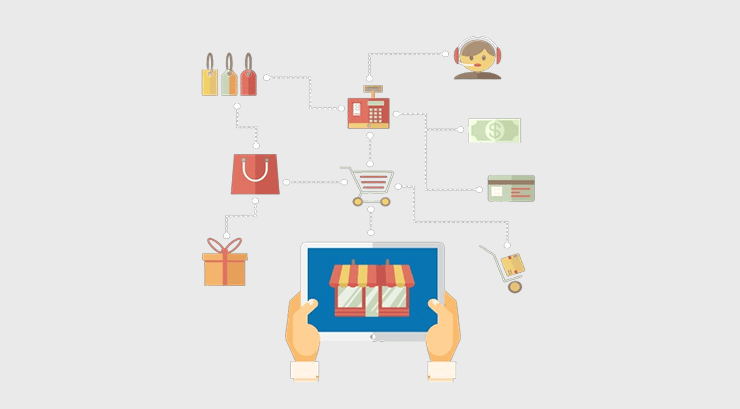
For example, if you notice that visitors are frequently clicking on a non-clickable image, it might be time to make that image a link to a related product or page.
ii) Leverage Session Recordings:
Watch real-time recordings of user sessions to understand their journey. You might discover that users are getting stuck on a particular step in the checkout process. This allows you to streamline the experience.
iii) Implement Analytics:
Tools like Google Analytics provide valuable data on user behavior. Track metrics such as bounce rate, time on site, and pages per session to gauge engagement.
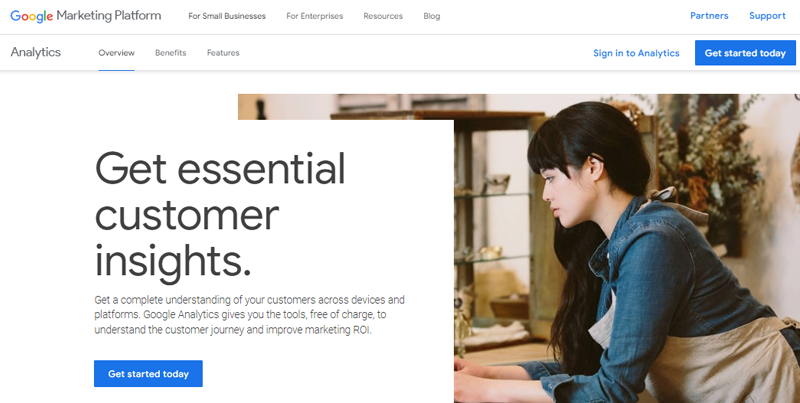
Suppose you found a high bounce rate on your landing page. Now, you can consider revising your content or design to better capture attention.
iv) Conduct A/B Testing:
Test different versions of your web pages to see which elements perform best.
For instance, you could test two different call-to-action buttons to see which one leads to more conversions.
v) Gather User Feedback:
Directly ask your customers for feedback through surveys or feedback forms. This can reveal insights into what they like or dislike about your site.

By actively tracking how people interact with your site, you can make data-driven decisions that enhance the user experience and boost your conversions.
Remember, the goal is to understand your visitors’ needs and preferences to create a more engaging and effective online store.
A well-structured and simple navigation system is the backbone of a user-friendly website. It acts as a roadmap, guiding visitors effortlessly through your site’s content and ultimately towards desired actions.

Here’s how to enhance your navigation for better conversions:
- Simplify Your Menu: Keep your menu clear and concise. For example, categorize products under broad headings that make sense to your customers. Like ‘Men’s Apparel’, ‘Women’s Accessories’, or ‘Sale Items’.
- Use Breadcrumbs: Implement breadcrumb navigation to help users understand their location within your site. This is useful for eCommerce sites with multiple categorizations.
- Optimize for Mobile: Ensure your navigation is touch-friendly and accessible on mobile devices. You can use a sticky menu can improve the mobile shopping experience.
- Highlight Popular Items: Feature your best-selling products or current promotions in the navigation bar to draw attention to them.
- Search Functionality: Include a prominent search bar to allow users to quickly find specific items. Consider adding auto-complete suggestions to enhance the search experience.
By improving your navigation, you make it easier for customers to find what they’re looking for. This can lead to increased satisfaction and higher conversion rates.
Note that, a user-friendly navigation structure is a cornerstone of a successful eCommerce site.
Check our article on the best practices for website navigation with examples to learn more.
3. Use High-Quality Product Images
In the world of online shopping, physical interaction with products is limited. Therefore, high-quality product images become the virtual hands and eyes of your customers. They are the key to capturing attention, conveying product details, and ultimately driving purchasing decisions.
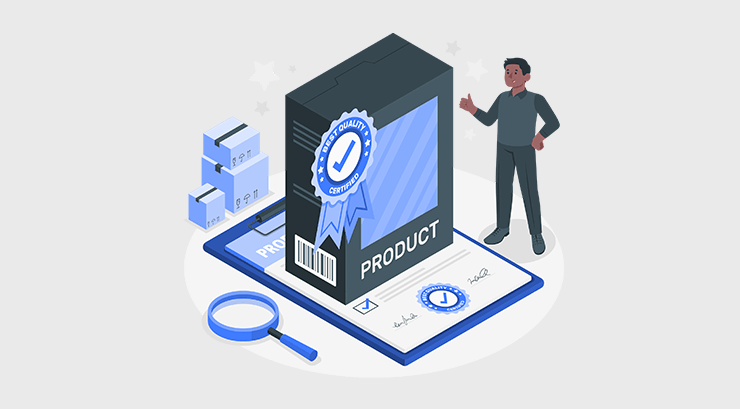
Imagine a product page with blurry, pixelated images or plain white backgrounds. It’s unlikely to inspire much confidence or excitement in potential buyers.
Now, visualize a product page with high-resolution images in a consistent style. That showcases the product from multiple angles with zoom functionality. Further, highlighting its unique features and intricate details.
Indeed, it’s like having a virtual showroom in your customer’s living room.

So, when you use really good product images, you build trust with customers. Plus, you help them see what they’re buying.
It’s like they say, a picture is worth a thousand words, And in eCommerce, it could also be worth a thousand sales.
4. Add Social Proof
Does your eCommerce store have customer reviews and testimonials? If not, then it’s high time you add social proof.
In the age of social media and online reviews, social proof has become an indispensable element of any successful eCommerce strategy.
Basically, social proof refers to the positive perceptions of others that influence our own behavior. It can take the form of customer reviews, product ratings, testimonials, social media endorsements, trust badges, and even influencer marketing.
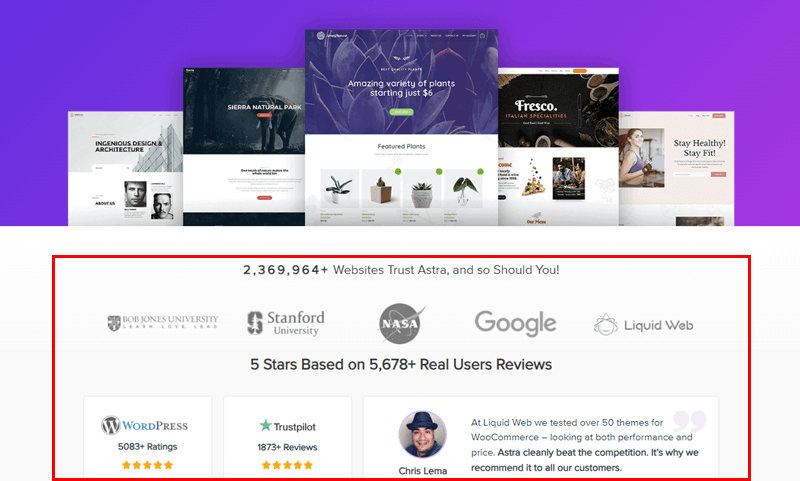
Indeed, social proof is powerful because it taps into our desire to conform to the majority. And make decisions based on the recommendations of others.
Moreover, it serves as a form of validation. As a result, this reassures potential customers that your products or services are worth their time and money.
Explore our article on how to get more Google reviews for your business.
5. Add Live Chat
In the fast-paced world of eCommerce, providing responsive and personalized customer support is crucial. So, you can build customer loyalty and boost conversions.
No doubt, live chat has emerged as a powerful tool for eCommerce businesses. You can offer real-time support to address customer inquiries, resolve issues, and enhance the overall shopping experience.

Imagine a customer browsing your website, encountering a question or concern about a product.
Now, if you’ve live chat, then your prospects can instantly connect with a customer support representative. And receive immediate assistance, and have their doubts resolved without leaving the website.
What’s more, you can use live chat to offer personalized product suggestions based on the customer’s browsing history or preferences. Or, even engage customers who appear to be leaving their cart with a chat prompt with help, discount, etc.
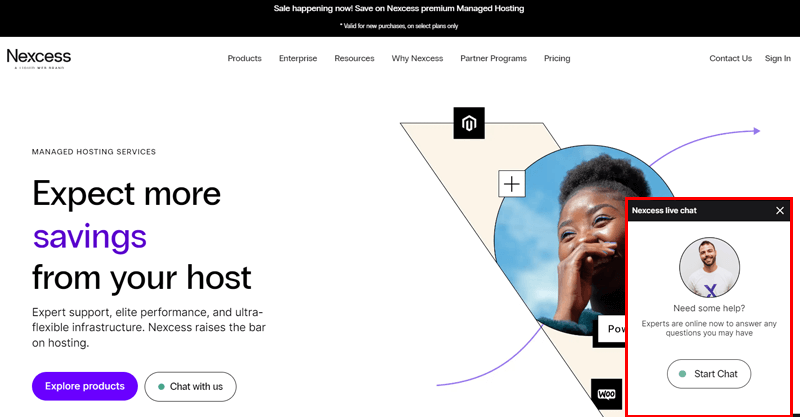
As a result, this creates opportunities to increase conversions through direct interaction. Ultimately, this also helps to establish personal connections with customers, fostering loyalty and repeat business.
6. Use a Simple Design Layout
Would you, as a customer, like a cluttered and confusing website design? Pretty much, no right!
Now, envision a store with a clean, organized layout, clear signage, and easy access to products. This simplified environment would encourage exploration and increase the likelihood of a purchase.

This means it’s high time you check whether your website embraces simplicity with a user-friendly design layout. Since a simple design layout can significantly improve the user experience and conversion rates on your eCommerce site.
Here’s how to implement a minimalist design approach:
- Prioritize clear, uncluttered layouts that highlight your products without distractions.
- Use ample white space around product images and descriptions to draw attention to them.
- Choose a color scheme that reflects your brand and use it consistently throughout your site.
- Simplify the checkout process with a clean design that guides users through each step without unnecessary complexity.
- Use clear and concise language throughout your website. Avoid jargon or overly technical terms that could confuse visitors.
- Maintain consistent branding elements, such as logos, colors, and fonts, throughout your website to boost brand recognition.
- A significant portion of eCommerce traffic comes from mobile devices. So, make sure the design layout is responsive and looks great on all devices.
Yet, note that simplicity is not about stripping away essential elements. Rather, it’s about creating a design that prioritizes clarity, functionality, and user experience.
By embracing simplicity, you can create an online store that is visually appealing, easy to navigate, and conversion-friendly.
7. Optimized Landing Page for Checkout
The checkout process is a crucial conversion point in the eCommerce journey. It’s where visitors transform into paying customers. Therefore, any friction or complexity can lead to abandoned carts and lost sales.
An optimized landing page for checkout can significantly reduce cart abandonment rates and boost conversions.

Let’s understand it more with an example.
Consider you visited an online store to purchase a product. Now, you see a checkout procedure that calls for complicated forms, several pages, and redirects.
What kind of impact does it have on you? Of course, the likelihood of you completing the purchase diminishes with each additional step.
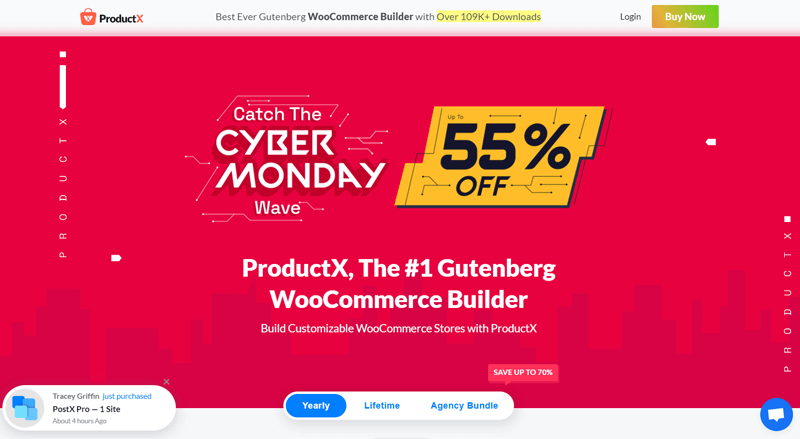
Meanwhile, visualize a streamlined checkout process that is concise, secure, and mobile-friendly. This simplified experience encourages you to complete the purchase without hesitation.
So, make sure you minimize the steps, display the progress indicator, and use clear call-to-action like ‘Buy Now’, ‘Proceed to Checkout’, etc.
Hence, the checkout process is not just about collecting payment information. Rather, it’s about creating a seamless and secure experience that leaves a lasting positive impression on your customers.
By optimizing your checkout landing page, you can significantly reduce cart abandonment rates, increase conversions, and foster customer loyalty.
8. Be Fairly Priced
Pricing plays a pivotal role in determining the success of your eCommerce business. Indeed, it’s a delicate balance between attracting customers with competitive prices while maintaining profitability.
Striking the right balance ensures that your products are appealing to your target audience and generate sustainable revenue for your business.
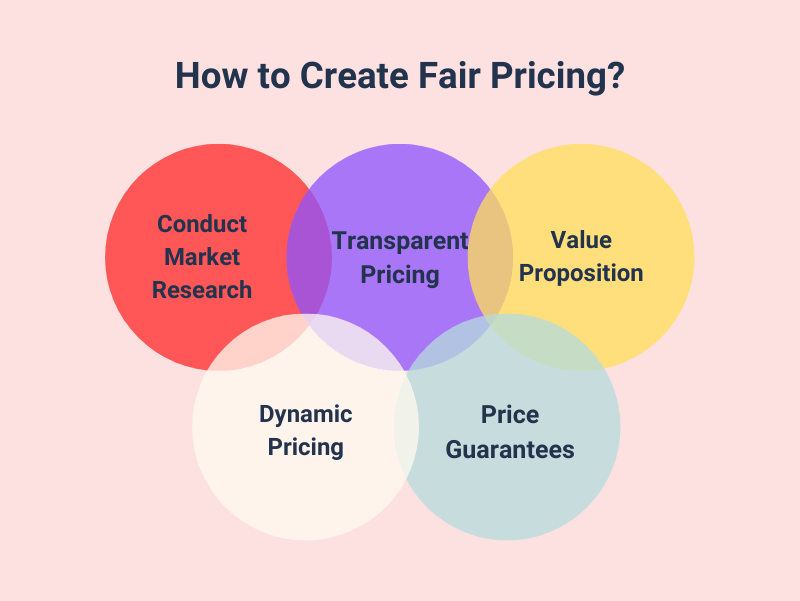
Here’s how to ensure your pricing strategy is competitive and transparent:
i) Conduct Market Research:
Understand the market and price your products competitively.
For example, if you’re selling handmade crafts, research similar items to ensure your prices are in line with customer expectations.
ii) Transparent Pricing:
Avoid hidden fees and be upfront about all costs, including shipping and taxes. Customers appreciate transparency and are more likely to complete a purchase when they know the total cost upfront.
iii) Value Proposition:
Highlight the value your product offers. If your prices are higher than competitors, explain why. Perhaps your products are of higher quality, eco-friendly, or come with exceptional customer service.
iv) Dynamic Pricing:
Consider using dynamic pricing strategies that adjust prices based on demand, inventory levels, or customer behavior.
v) Price Guarantees:
Offer a price match guarantee to reassure customers that they are getting the best deal possible.
Hence, by being fairly priced, you not only attract price-sensitive customers but also establish your brand as trustworthy and customer-centric.
Note that a fair pricing strategy is a significant factor in a customer’s decision to purchase from your eCommerce store.
9. Free Trial or Product Return Policy
Today, customers are hesitant to purchase without experiencing the product firsthand. Hence, offering a free trial or product return policy can be a game-changer.
As it can significantly reduce purchase hesitation and increase conversions. Moreover, it’s proof of your confidence in your products and your commitment to customer satisfaction.
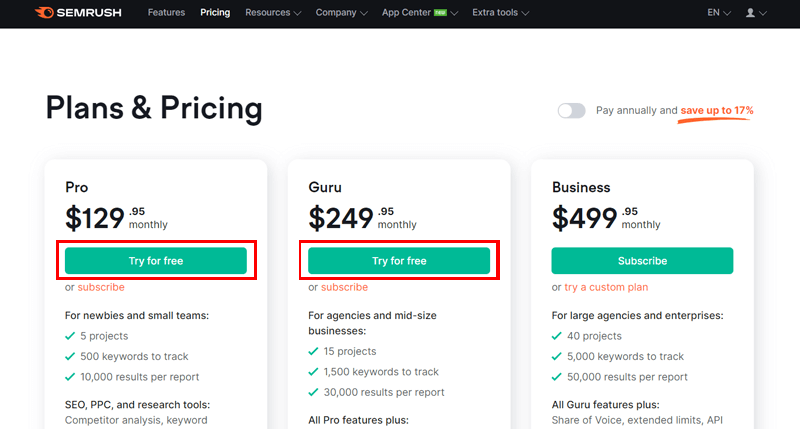
For example, suppose you’re a software or subscription-based service provider. Now, you can offer a 14-day or 30-day trial that allows customers to experience the product before committing.
On top of that, make your return policy easy to find and understand. A straightforward, no-questions-asked return policy can be very reassuring to customers.
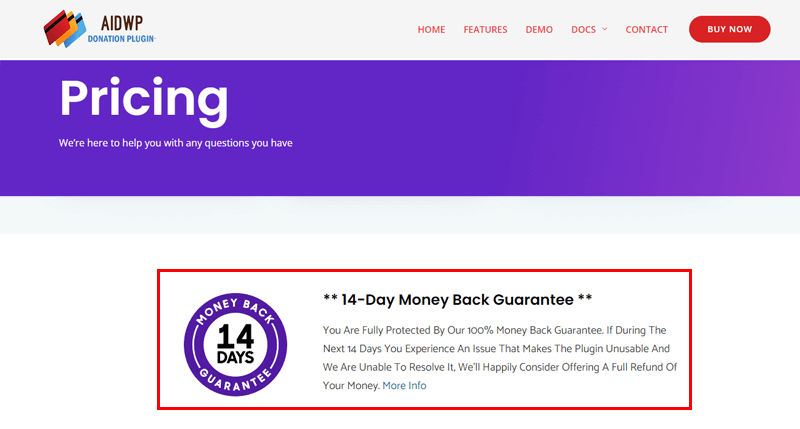
Also, you can highlight your free trial or return policy on product pages and during the checkout process. This reassures customers that they can try the product risk-free.
Ultimately, you can use the return process as an opportunity to gather feedback on why the product didn’t meet the customer’s needs. This can act as invaluable insight for future improvements.
10. Create a Sense of Urgency (Quick Discounts)
Another killer way to improve your conversion is to create a sense of urgency. This can encourage customers to make a purchase decision more quickly.
Quick discounts, limited-time offers, and countdown timers can effectively push your prospects to act now rather than later. Further, this leads to increased sales and a more dynamic shopping experience.
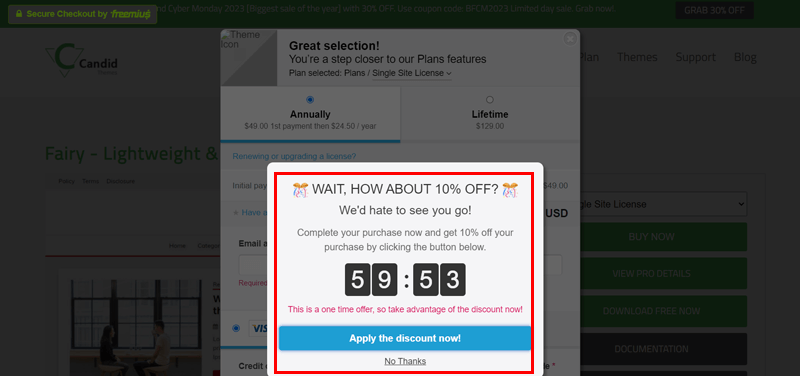
Suppose, a customer is browsing your website, contemplating a purchase but not quite ready to commit.
Here, let’s say you show a pop-up offering a 20% discount for the next 30 minutes. Now, you can suddenly make that product seem more appealing and urgent to acquire.
Also, you can show limited stock availability to convey scarcity. Phrases like ‘Only 3 left in stock!’ can create a Fear Of Missing Out (FOMO) and encourage immediate purchases.
Keep in mind, that the key is to make the offer compelling enough. So that your customers feel they can’t afford to wait.
11. Offer Free Shipping
Offering free shipping is another proven strategy to reduce cart abandonment and increase conversions. Here’s how to implement it effectively:
- Encourage larger orders to boost cart additions. For instance, you can provide ‘Free shipping on orders over $50’.
- Prominently showcase the free shipping offer on the homepage, product pages, and during checkout for customer awareness.
- Generate urgency by providing limited-time free shipping, especially during holidays or special sales.
- Include shipping costs in product prices for all orders, simplifying the decision-making process for customers.
- Reward loyal customers with free shipping through a loyalty program or VIP membership.
Hence, offering free shipping not only meets customer expectations but also provides a favorable purchase incentive. Keep in mind, that the appeal of ‘free’ is a strong motivator for online shoppers.
12. Collecting Customer Emails
Today, customer emails act as an invaluable asset for fostering personalized engagement, building relationships, and driving repeat business.
By collecting and utilizing customer email addresses, you can create targeted marketing campaigns. And provide personalized product recommendations, and nurture long-lasting customer relationships.
For instance, let’s consider a new customer is making a single purchase from your website. Without their email address, you have limited opportunities to connect with them again, potentially losing a valuable customer.

Conversely, capturing a customer’s email address opens up a world of possibilities for personalized engagement.
You can send them welcome emails, share relevant product updates, offer exclusive discounts, and provide timely reminders about abandoned carts.
Moreover, you can provide a compelling reason for customers to subscribe, such as a discount code or exclusive content. For example, ‘Sign up for our newsletter and receive a 10% off coupon for your next purchase’.
Ultimately, this helps you create a direct line of communication with your audience. Remember, the key is to offer value in exchange for their contact information that can foster conversions.
Check our comprehensive guide article on email marketing to run an email campaign effectively.
13. Bulk Order Discounts
Customers love feeling like they’re getting a great deal, especially when they’re buying in larger quantities.
Hence, offering bulk order discounts is not just about selling more products. Rather, it’s about building strategic partnerships and optimizing inventory management. So that you can establish your business as a reliable supplier for larger orders.
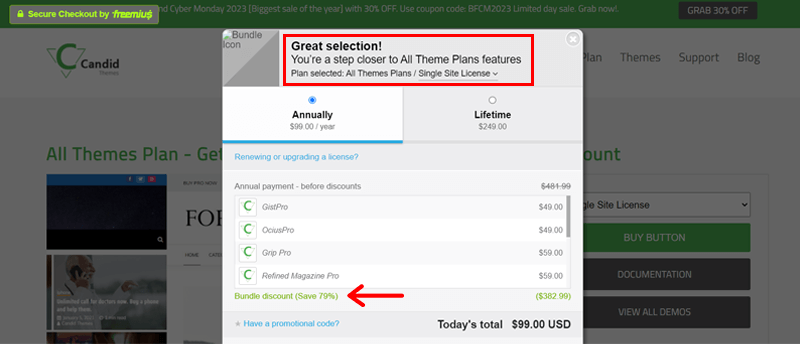
Here’s how you can implement bulk order discounts effectively:
- Tiered Pricing: Set up discounts for buying more, like ‘Get 10% off for 5 items; 15% off for 10 items’.
- Volume Discounts: Give discounts based on the total products bought. Whether one item in large quantities or a mix reaching a specific limit.
- Bundle Deals: Boost sales by offering savings on complementary products. Like ‘Save $50 when you buy a theme and plugins together’.
- Wholesale Pricing: Attract larger business orders by offering special wholesale rates for bulk purchases.
- Promote Bulk Savings: Encourage larger orders by clearly highlighting potential savings on product pages and during checkout.
Once you do so, you encourage customers to buy more and also increase the average order value. This can have a significant impact on your revenue and boost your conversions.
14. Cart Abandonment Recovery
In eCommerce, cart abandonment is a common phenomenon where potential customers add items to their carts but fail to complete the purchase.
This could be due to various factors, such as unexpected shipping costs, a complicated checkout process, or simply distractions. Ultimately, this leads to significant lost revenue and missed opportunities.
Hence, that’s exactly where cart abandonment recovery strategies come into play.
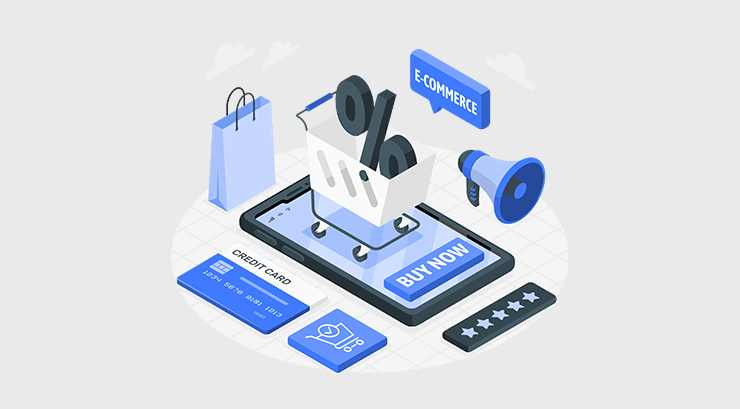
Here’s how to win back customers who have left items in their carts:
i) Email Reminders:
Send a friendly email reminder to customers who have left items in their cart.
For example, you can personalize the message with the customer’s name and the items they considered. Such as ‘We noticed you left some great picks in your cart, Sam! Would you like to complete your purchase?’
ii) Exit-Intent Pop-Ups:
You can also implement exit-intent pop-ups that trigger when a user is about to leave the site with items in their cart. And offer help or a discount to motivate them to stay and buy.
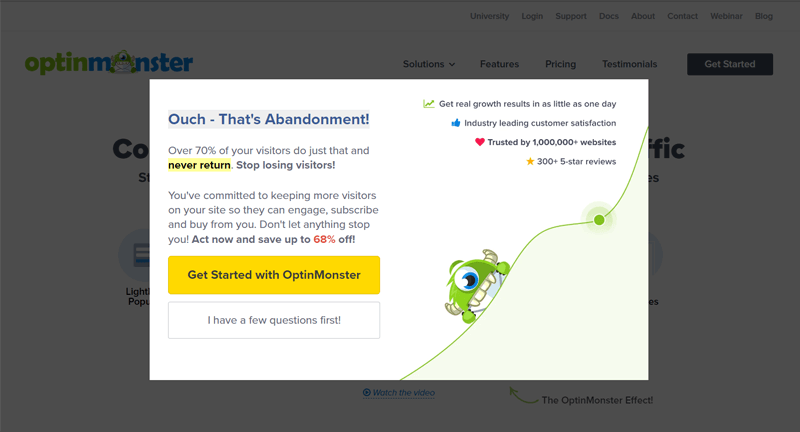
iii) Retargeting Ads:
You can use retargeting ads to remind customers of the products they viewed on your site. This keeps your products top-of-mind and can entice customers to return and complete their purchase.
iv) Incentives to Return:
Offer a special discount or free shipping to encourage customers to come back and finalize their order.
For example, ‘Come back and complete your purchase within the next 24 hours to receive 10% off your order!’
v) Cart Analysis:
Analyze abandoned carts to identify patterns and potential issues that may be causing customers to leave without purchasing. Address these issues to improve the overall shopping experience.
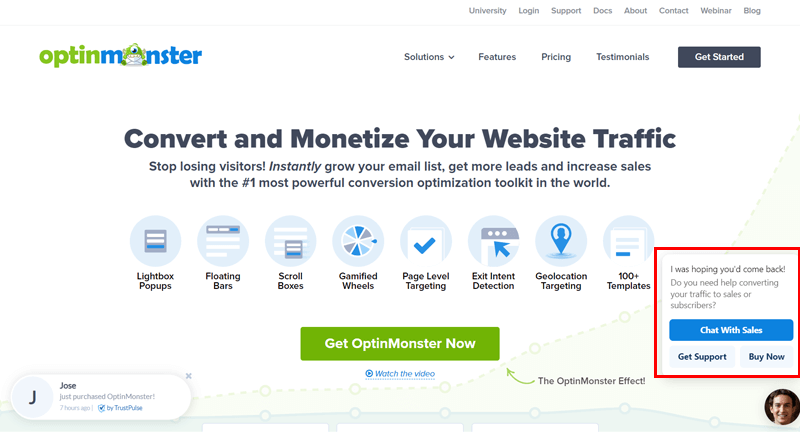
With these tactics, you can re-engage the customers and encourage them to return to their carts and complete their transactions. Recall, that a little push can go a long way in bringing customers back to complete their transactions.
15. Test Your Offers
eCommerce is full of dynamism, where customer preferences and market trends evolve rapidly. Hence, it’s very necessary to continuously test and refine your offer to maximize conversions.
Most of all, you’ll know what resonates best with your audience and whether you can add value to them.
So, here’s how you can test can optimize your offers for maximum impact.
- A/B Testing: Test different offers like ‘Buy One, Get One Free’ vs ‘20% Off’ to find the most effective one.
- Segment Your Audience: Customize offers for specific groups and discover what resonates with each demographic.
- Monitor Performance: Keep an eye on offer metrics like redemption rates and conversion rates to gauge effectiveness.
- Adjust Quickly: Quickly adjust or try new offers based on performance data to optimize results.
- Feedback Loop: Collect customer feedback on offers to understand preferences and motivations.
By continuously testing your offers, you can refine your approach and discover the most compelling deals that drive customer action.
16. Use Multiple Payment Methods
Today, customers have varying preferences and comfort levels with different payment methods.
Imagine a customer reaching the checkout page, ready to complete their purchase. Now, let’s suppose their preferred payment method, such as a specific e-wallet or mobile payment option, is not available. This can lead to frustration, cart abandonment, and lost sales.
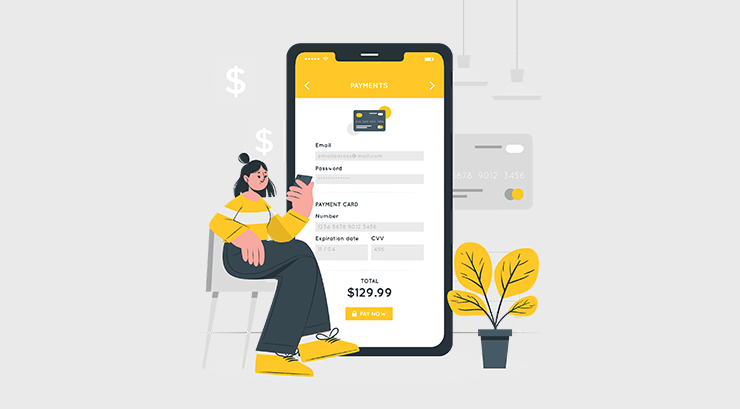
Hence, offering a wide range of payment options can significantly enhance the overall shopping experience and drive conversions.
Here’s how to implement multiple payment options effectively:
- Credit and Debit Cards: Accept all major credit and debit cards, as they are the most commonly used payment methods online.
- Digital Wallets: Integrate digital wallets like PayPal, Apple Pay, and Google Wallet, which offer quick and secure transactions.
- Bank Transfers: Include options for direct bank transfers, especially for larger transactions or B2B sales.
- Digital Currency: Integrate digital currency options like Bitcoin and Ethereum, catering to a growing tech-savvy audience.
- Cash on Delivery: For certain markets, cash on delivery is a preferred option for customers wary of online payments.
- Financing Options: Provide financing options for higher-priced items, allowing customers to pay in installments.
With that, you can ensure that each customer can choose the option they’re most comfortable with. This reduces the chances of cart abandonment due to payment issues. Again, recall that convenience and security are key when it comes to payments.
17. Guest Checkout Possibility
Another killer way to improve your conversion is to offer the guest checkout possibility. This can streamline the purchase process and lead to higher conversation rates.
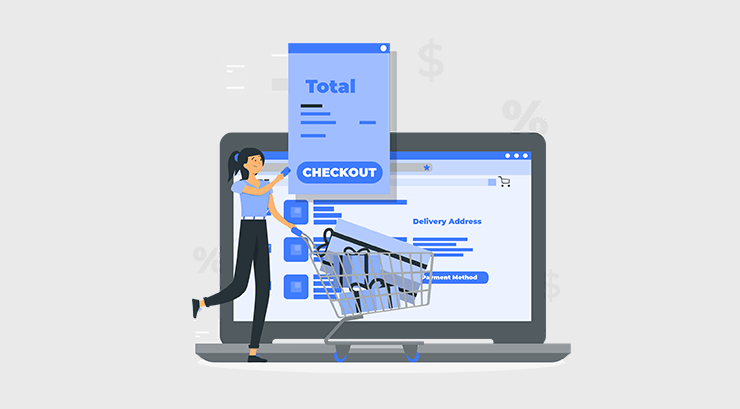
Let’s understand this with a hypothesis example.
Suppose, a customer is browsing your website, discovering a product they love and wanting to purchase it immediately. However, the requirement to create an account before checkout can deter them from completing the purchase, leading to lost sales.
Now, what you can do is allow customers to purchase without creating an account. This can appeal the first-time buyers who are in a hurry or prefer not to commit to an account.
Moreover, you can make the guest checkout option visible and easy to select. For example, include a ‘Checkout as Guest’ button that stands out on the checkout page.
After a successful guest checkout, you can then offer the option to create an account using the information already provided. For this, you can provide an incentive such as a discount on their next purchase.
Therefore, easier the process, higher the chance that your customers are to complete their purchase.
18. Proper Information on Terms and Conditions (T&Cs)
In the ever-evolving digital landscape, trust and transparency are crucial.
Therefore, your terms and conditions should be clear and cut and accessible easily. Particularly, this includes policies on returns, refunds, privacy, and any kind of limitations.
So, that you can build customer confidence, foster long-lasting relationships, and ensure a smooth transaction.

Here’s how you can present your terms and conditions effectively:
- Easy to Find: Ensure your terms and conditions are easy to locate. Typically, it’s kept in the footer of every page or during the checkout process.
- Plain Language: Write your terms and conditions in plain language that is easy to understand. Avoid legal jargon that might confuse customers.
- Organized Structure: Organize your T&Cs into clear sections with headings, subheadings, and bullet points for easy navigation.
- Highlight Key Points: Summarize the most important points. Such as return policies, warranty information, and payment terms, at the beginning.
- Accessibility: Design your T&Cs to be accessible to users with disabilities, including using appropriate font sizes, color contrast, etc.
- Consent Checkbox: Add a checkbox for customers to confirm agreement with terms and conditions before completing the purchase.
- Update Regularly: Keep your terms and conditions up to date with any changes in your business practices or relevant laws.
With that done, you ensure that customers are fully informed about their rights and obligations when making a purchase. This can prevent misunderstandings and disputes and foster long-lasting relationships with your business.
19. Optimize the Speed of Your Site
Suppose a customer is visiting your website, eager to explore your products or services. However, if the website loads slowly, they may become frustrated and abandon the page before even seeing your offerings.
Hence, optimizing your site’s speed is crucial for providing a seamless and engaging user experience. A properly optimized website can reduce page load times, minimize bounce rates, and enhance overall user satisfaction.
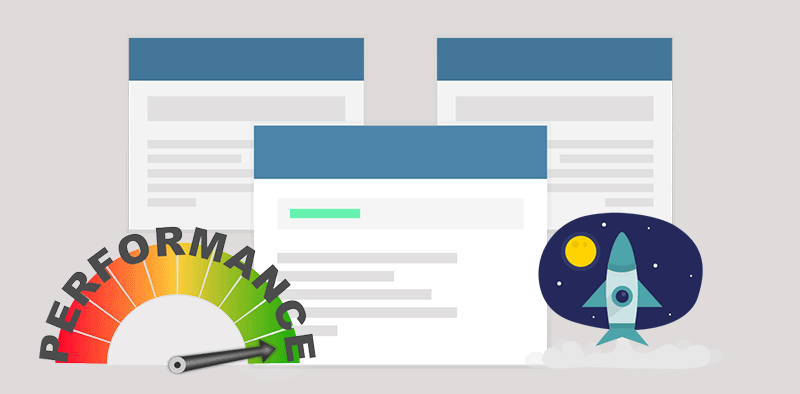
You can stick to the following guidelines to optimize the speed of your site.
- Compress Images: Reduce file sizes using compression tools for faster page loading without losing quality.
- Minimize HTTP Requests: Decrease the number of elements like scripts and images to lower HTTP requests and enhance page speed.
- Use CDN: Employ a Content Delivery Network (CDN) to distribute content globally, ensuring quicker access for users worldwide.
- Enable Browser Caching: Accelerate page loading for return visitors by allowing browsers to retrieve resources from the cache.
- Optimize Code: Streamline code by minifying CSS, JavaScript, and HTML, removing unnecessary elements for improved load times.
With that, you boost user experience and positively impact your site’s search rankings. As search algorithms consider site speed for Search Engine Optimization (SEO).
Browse our comprehensive article on how to optimize your website speed to learn more.
20. Ensure Visitors to Your Website Feel Safe
In the digital age, online security is a top priority for online shoppers. Hence, ensuring visitors feel secure on your website is essential for building trust and encouraging transactions.
Visualize, a customer visiting your website and providing their personal information to make a purchase or create an account.
However, they may hesitate to share sensitive data if they lack confidence in your website’s security. Further, this leads to lost sales and reputational damage.
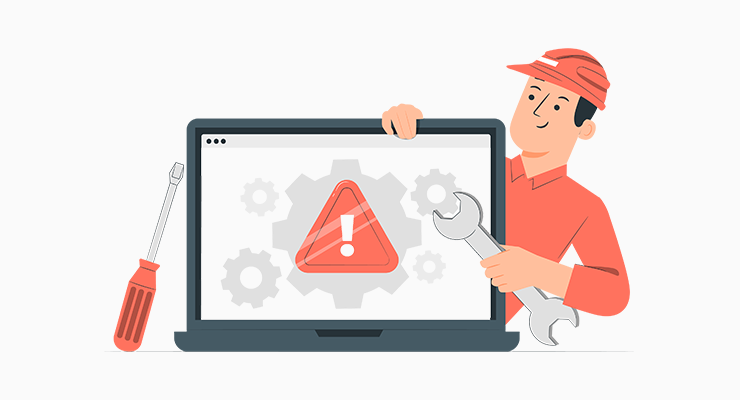
Hence, you can adopt to following security tactics to ensure your website is a safe space for customers.
- SSL Certificate: Encrypt data with an SSL(Security Socket Layer) certificate for secure transmission. It’s shown by “https” and a padlock icon.
- Privacy Policy: Maintain a clear and accessible privacy policy detailing data collection, usage, and protection.
- Secure Payment Gateways: Opt for PCI DSS (Payment Card Industry Data Security Standard) compliant payment gateways for safe transactions.
- Regular Security Audits: Conduct frequent security audits to find and fix website vulnerabilities.
- User Authentication: Enhance account security with strong methods like two-factor authentication.
With these security measures, your website feels safe to your visitors. As a result, you create a trustworthy environment that can lead to increased customer confidence and higher conversion rates.
Explore our article on eCommerce security to learn more about securing your eCommerce website.
21. Other Additional Actions
Beyond the core strategies, there are several additional actions you can take to improve the conversion.
Here’s a list of extra measures to consider:
- Personalization: Use data analytics to personalize the shopping experience. Such as displaying recommended products based on browsing history.
- Content Marketing: Develop a content marketing strategy including blogs, videos, and social media posts to drive traffic and engage customers.
- SEO Best Practices: Implement SEO best practices to improve your site’s visibility and attract organic traffic.
- Customer Loyalty Programs: Create loyalty programs that reward repeat customers with discounts, exclusive offers, etc.
- Live Events: Host live events, such as webinars or product launches. This can engage with your audience and create excitement around your brand.
- Influencer Partnerships: Collaborate with influencers who align with your brand to reach new audiences and build credibility.
- Continuous Learning: Stay informed about the latest eCommerce trends. So, you can continually improve your site and stay ahead of the game.
By implementing these additional actions, you can further refine your eCommerce strategy. And attract more customers, and enhance the overall shopping experience on your site.
Remember, the eCommerce landscape is always evolving. So, it’s important to keep innovating and adapting to new trends and customer expectations.
Tools That Can Help You Improve eCommerce Conversion Rates
Optimizing your eCommerce conversion rates is a multifaceted task that requires the right tools.
Here’s a list of essential tools that can help you enhance your site’s performance and boost conversions:
| Tool Category | Tools | Description |
| Analytics Platforms | Google Analytics, Adobe Analytics | Track user behavior, traffic sources, and conversion paths. |
| Heatmap Tools | Hotjar, Crazy Egg | Visualize where users click, move, and scroll on your site. |
| A/B Testing Software | Optimizely, VWO | Test different versions of web pages to improve conversions. |
| Email Marketing Services | Mailchimp, Constant Contact | Manage email campaigns to engage customers. |
| SEO Tools | Semrush, Ahrefs, Moz | Analyze and improve your site’s SEO performance. |
| Customer Feedback Surveys | SurveyMonkey, Typeform | Collect direct customer feedback for insights. |
| Live Chat Software | Intercom, Zendesk | Provides real-time customer support and engagement. |
| Content Delivery Networks (CDN) | Cloudflare, Amazon CloudFront | Speed up content delivery for better site performance. |
| CRM Systems | Salesforce, HubSpot | Manage customer interactions and data throughout their lifecycle. |
These tools can help you track, analyze, and optimize various aspects of your eCommerce site to improve conversion rates. And enhance the overall customer experience.
Frequently Asked Questions (FAQs) on eCommerce CRO (Conversion Rate Optimization)
Here are some frequently asked questions (FAQs) about eCommerce CRO.
Q.1 What is eCommerce CRO?
Q.2: Why is CRO important for online businesses?
Q.3 How can I measure my eCommerce conversion rate?
Q.4 What are some common CRO strategies?
Q.5 Do I need a lot of traffic to benefit from CRO?
Q.6 How often should I test and optimize my website for CRO?
Conclusion
And that’s all, folks! We’ve come to the end of our article on eCommerce CRO.
Here, we’ve covered several killer ways and tools to help you boost your online sales and achieve remarkable results.
Recall that CRO is an ongoing journey of learning, experimentation, and refinement rather than a one-time event. As customer preferences evolve and technologies advance, your CRO efforts must adapt accordingly.
We’d love to hear your thoughts on conversion rate optimization. Share your experiences, challenges, and successes in the comments below.
You can delve deeper into the world of eCommerce by exploring our other informative articles. Such as how to make a website mobile-friendly and how to add a banner in WordPress for conversion.
If you found this article valuable, share it with your friends to help them optimize their conversion rates.
Do follow us on our social media handles Facebook and Twitter for more content like this.
